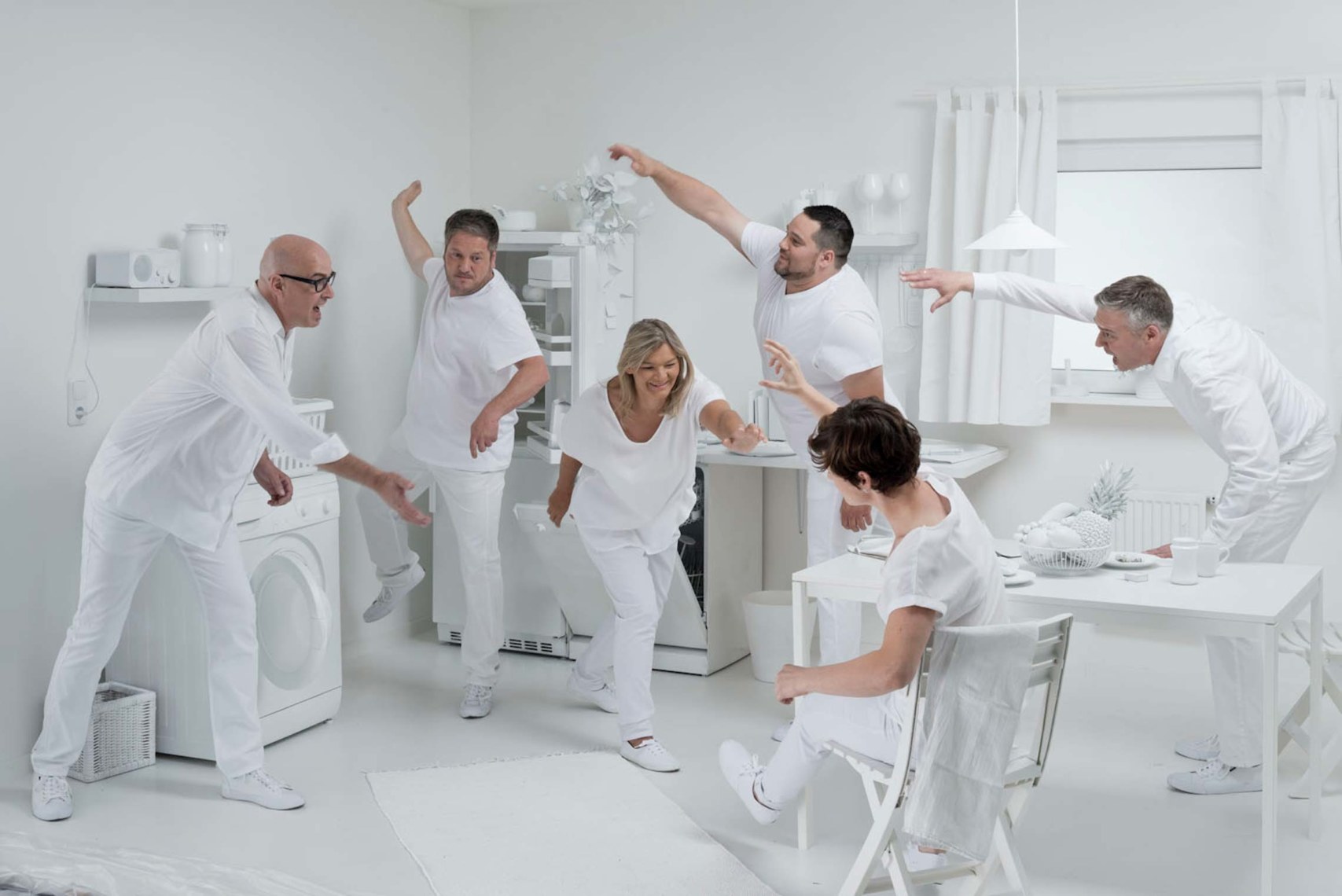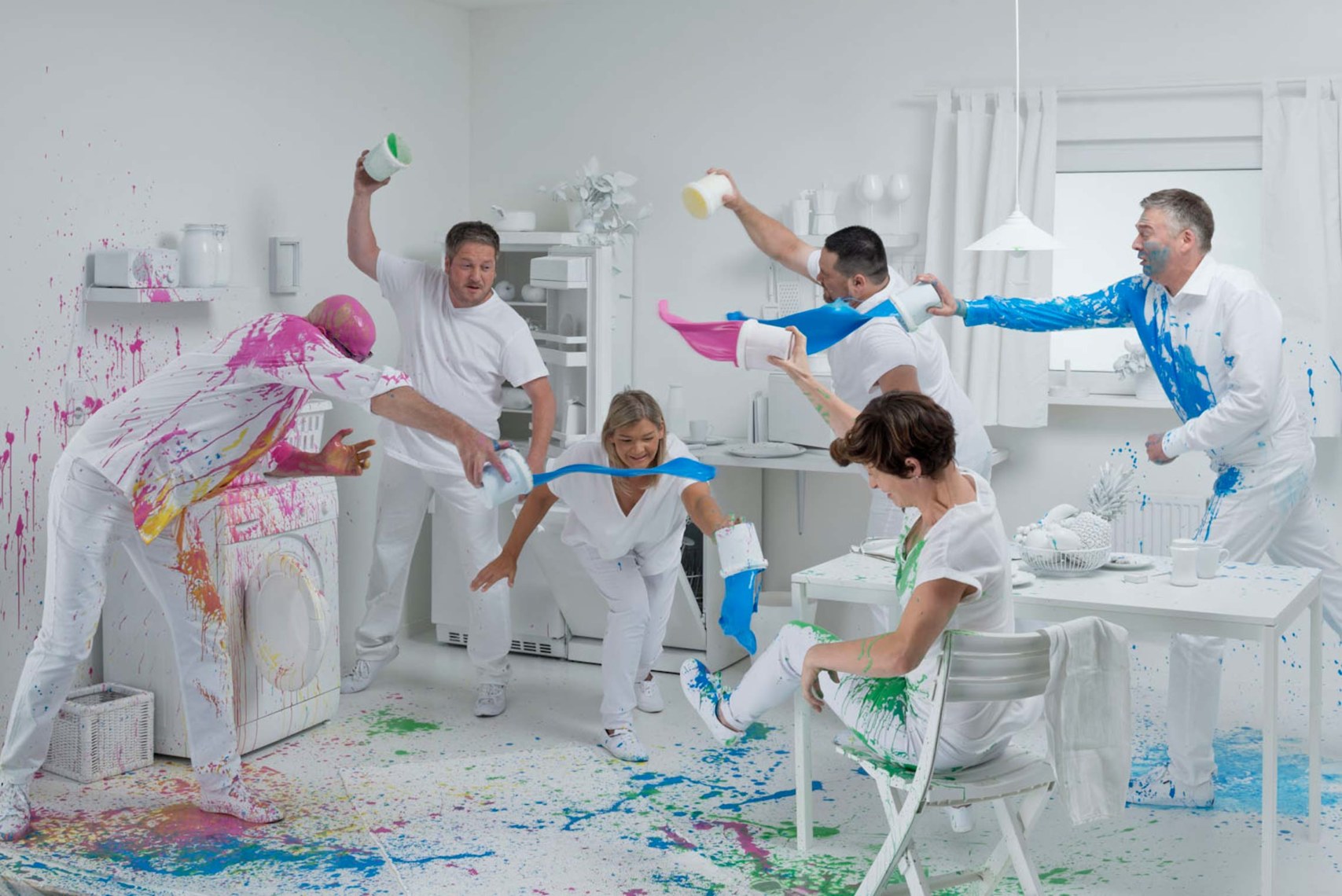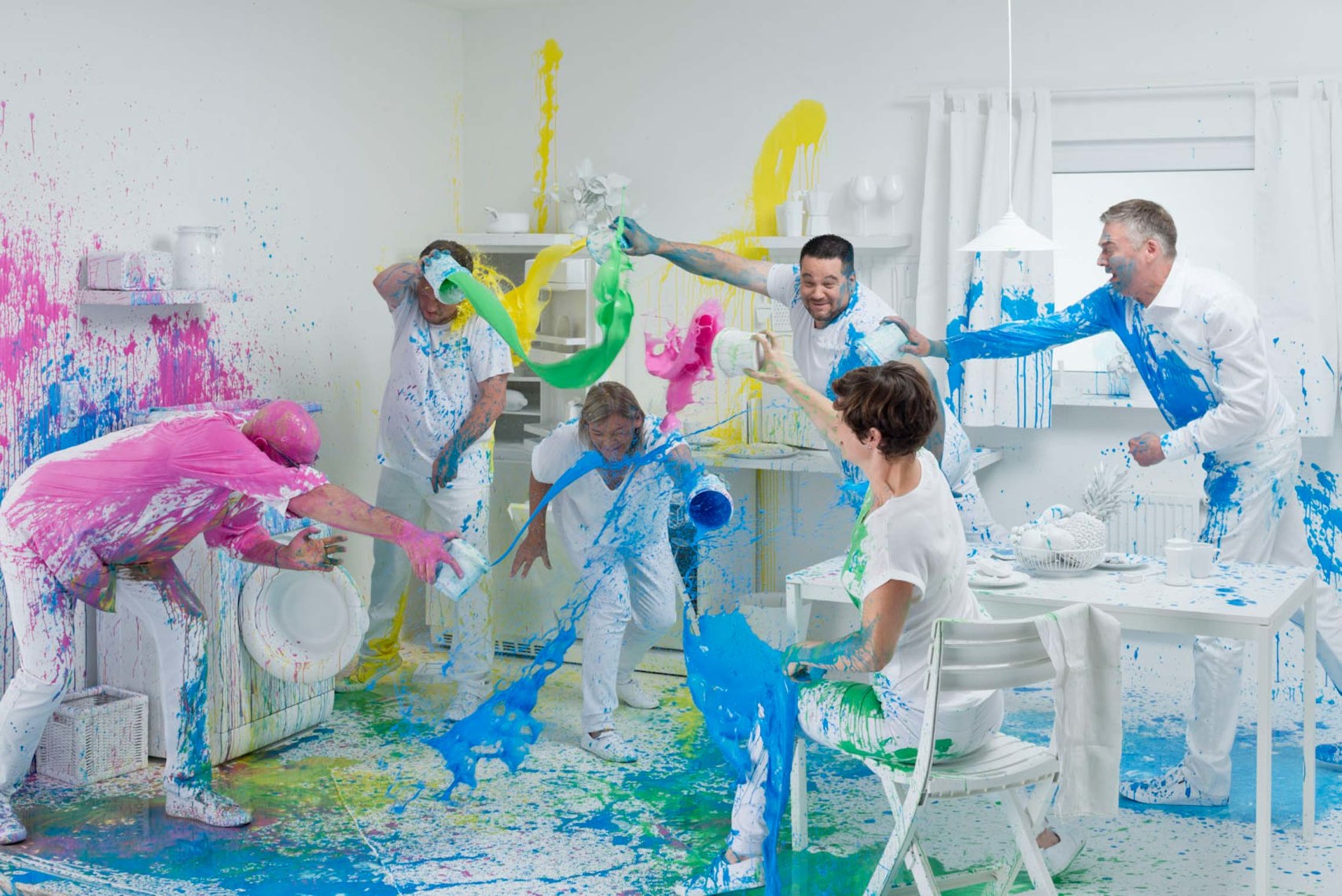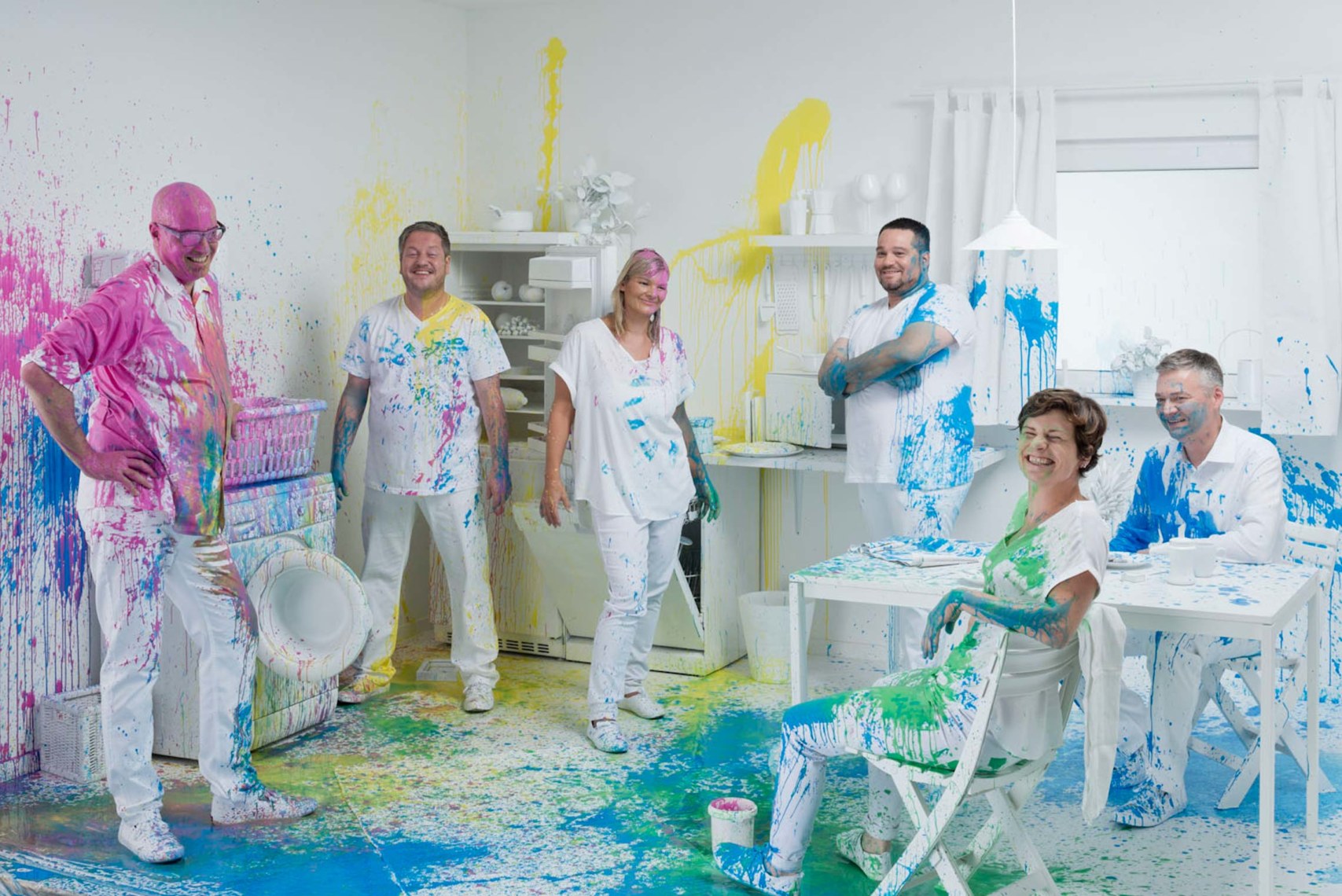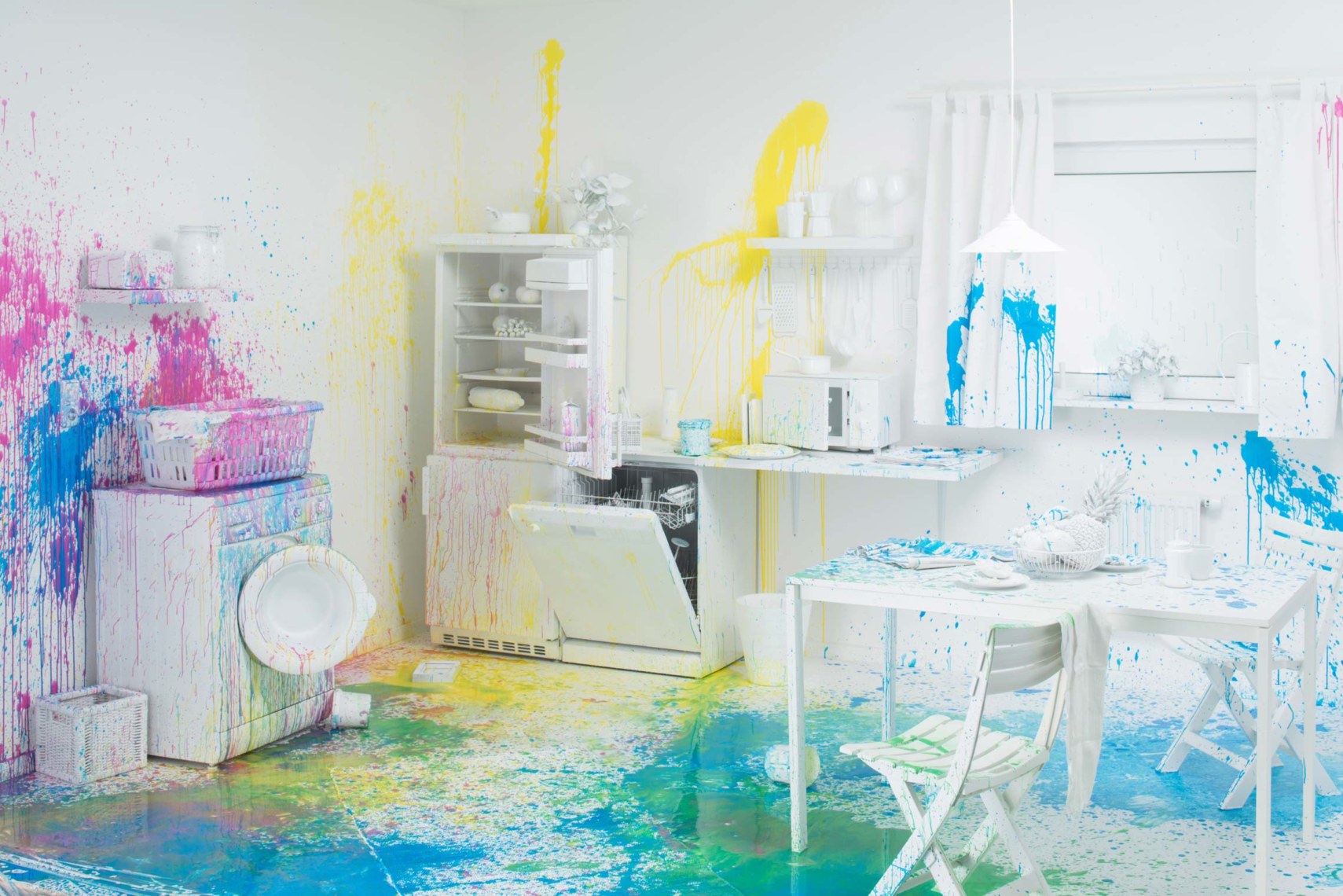After eight hours, the Wörwag photo models had had enough of white because the company is also very colourful at times. They pelted each other enthusiastically with water soluble finger paints. Strict choreographic instructions were given by the photographer Rafael Krötz.
White overload
“I like white,” says Sonja Cramer, who works at Wörwag in the customer lab for indoor powder coatings. “But I’ve never experienced it like this. I guess I didn’t even imagine it like this either. It’s really cool.” Her colleague Annett Schräpler is enthusiastic: “I’m excited to be participating. In many ways, this is art!” Even if the participants work with this decidedly colourful shade of paint on a daily basis, a total immersion in a white dream world is refreshing. White goods play a major role at Wörwag.
The required powder is produced in a factory in Renningen. But white is not just white. Dr. Peter Moritz is banking on Wörwag strengths. “Our quality sets us apart from others,” says the manager, who also threw on white clothes for the shoot. “If you spill some hot fat onto a white coated surface, in most kitchens, there is a high probability it will leave a yellowish stain on the surface. Our paints are designed to be more resistant.”

Thorsten Bollinger has a special relationship with washing machines. For five years, the market manager has been in charge of the white goods segment. Which by the way, aren’t always white. For commercial washers, Wörwag usually delivers silver paint.
“The white of white goods is not simply a consistent long-term trend, it’s actually the easiest solution.” Thorsten Bollinger
Symbol of purity
In the white room, market manager Thorsten Bollinger stands beside the washing machine. For five years, the trained industrial mechanic and master craftsman has been responsible for household goods and building equipment— a market that is predominantly white. After all, the colour conveys purity and cleanliness. In addition to kitchen appliances, there are radiators and boilers. “White is not just a consistent long-term trend, it’s the easiest solution. Because it is neutral,” explains the 48-year-old. In addition, it’s a cost saving solution.
Colour finishes are more expensive, as the plastic parts in the respective colours have to be manufactured. On the other hand with white you can produce large numbers and just paint them white. Furthermore, paint shops need to be converted to multicolour operation in the case of goods in different colours.

Annett Schräpler who works in the laboratory for indoor powder coatings juggles with a carton of milk from the white refrigerator and proves that she is a good catcher.
Although white powder coating is a mass product, the demands are high and vary according to the user and product.
The paint of a washing machine must be resistant to soapy water, for whereas radiator paint has to to be resistant to yellowing. Stove tops and ovens need to withstand hot fat. Premium manufacturers such as Miele also require additional stress testing. For example, we test to see how many times a plastic laundry basket can scrape the machine front below the drum door before you see any marks. Or, how often can the zipper of a pair of jeans scratch the paint while loading? The number of mini-impacts like that add up over a projected working life of fifteen years.
Testing such requirements are everyday work in our laboratory. “Larger customers, especially, want a quality supplier who is able to adapt the coat to their needs,” says team leader Regina Neubauer. Stefan Lutzei, a lab technician, knows what that means in practice. He and his colleagues regularly receive plastic or metal templates and have to produce a powder coat to match.
“Either we develop a completely new shade or modify one for the customer,” says Lutzei. The devil is in the details. Lutzeis colleague Cramer explains: “Among other things, it depends on the processing done by the customer. We have to modify the powder coatings to match the type of furnace.” Electric and gas furnaces may well yield different results. Once you have mastered the method, powder coatings prove to be highly efficient and environmentally friendly.

Colleagues from the laboratory for indoor powder coatings Sonja Cramer and Stefan Lutzei are still deciding who will empty the dishwasher. But they are agreed: It has to be emptied before they have breakfast.
“Either we develop a completely new shade or modify one for the customer,” says Lutzei.
White-wise by experience
At Wörwag, white goods have a long tradition. BSH (Bosch Siemens Household goods) in Traunreut has depended on Wörwag paint since their early days as Siemens Electrical Appliances AG in the late fifties. Wörwag powder coatings have been used for white parts produced by a BSH supplier since 1980. And since 1998, BSH has been a direct customer.
Today Wörwag powder coatings are used in BSH plants in Turkey, Greece, China and Spain. An important customer is the Liebherr company, which has been using Wörwag products in its plants in Ochsenhausen (Germany) and Lienz (Austria) for 35 years. Wörwag provides the typical Liebherr White with a customized polyester epoxy powder coating.

Alberto Elliott chuckles as he stands by his randomly assigned position by the white microwave: “Pizza Alberto is ready!” In everyday life, he works in the powder coating production at the Renningen plant and rarely wears white clothes.
“The quality still has to be right even with large quantities. Therefore there are constant checks during production.” Alberto Elliott
Production in a multi-shift operation
A specially designed powder coat with an extremely robust polyurethane resin surface has contributed to the success of the brand for twelve years. Several thousand tons of powder coating leave the plant each year. White is often produced in large batches of up to 30 tons at a time. “We produce them in a multi-shift operation,” explains Alberto Elliott from the powder factory Renningen. “The quality still has to be right even with large quantities. Therefore, there are constant checks during production.”
The Wörwag colleagues love white, but are sometimes glad that there are other colours. Cramer: “Developing a red or blue, is of course a welcome change once in a while,” Lutzei agrees. He recently used the label of a beer bottle as a reference to develop a green refrigerator. And since the employees of a paint factory must have strong colour preferences by default, the end of the photo session turned into a very colourful affair.

Dr. Peter Moritz, Managing Director, could hardly wait for the opportunity to immerse himself in the white world. Radiators are almost always white. The one you see under the window was left switched off as it was hot enough under the photographer’s spotlights.
Text: Michael Thiem
Photos: Rafael Krötz

